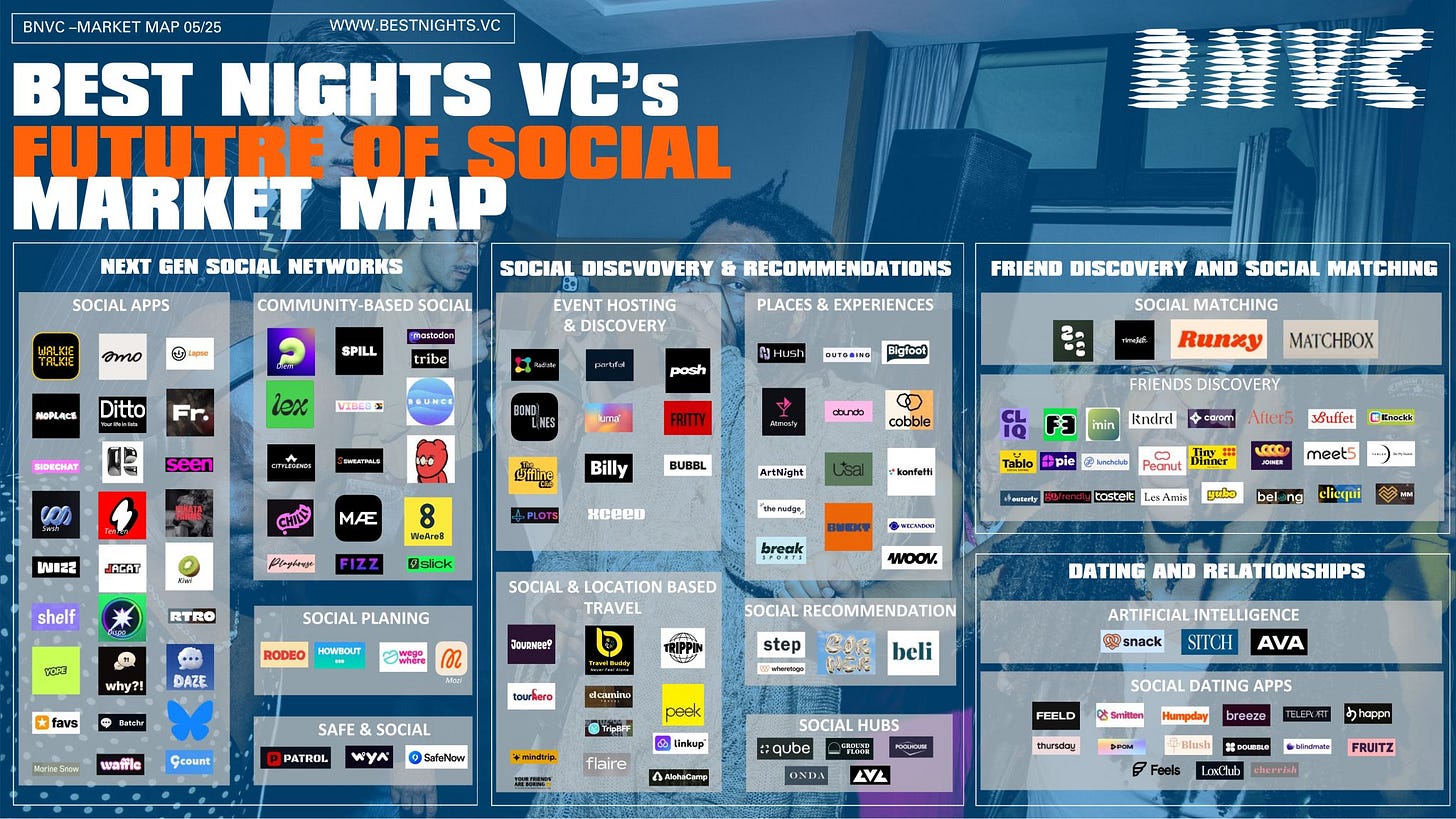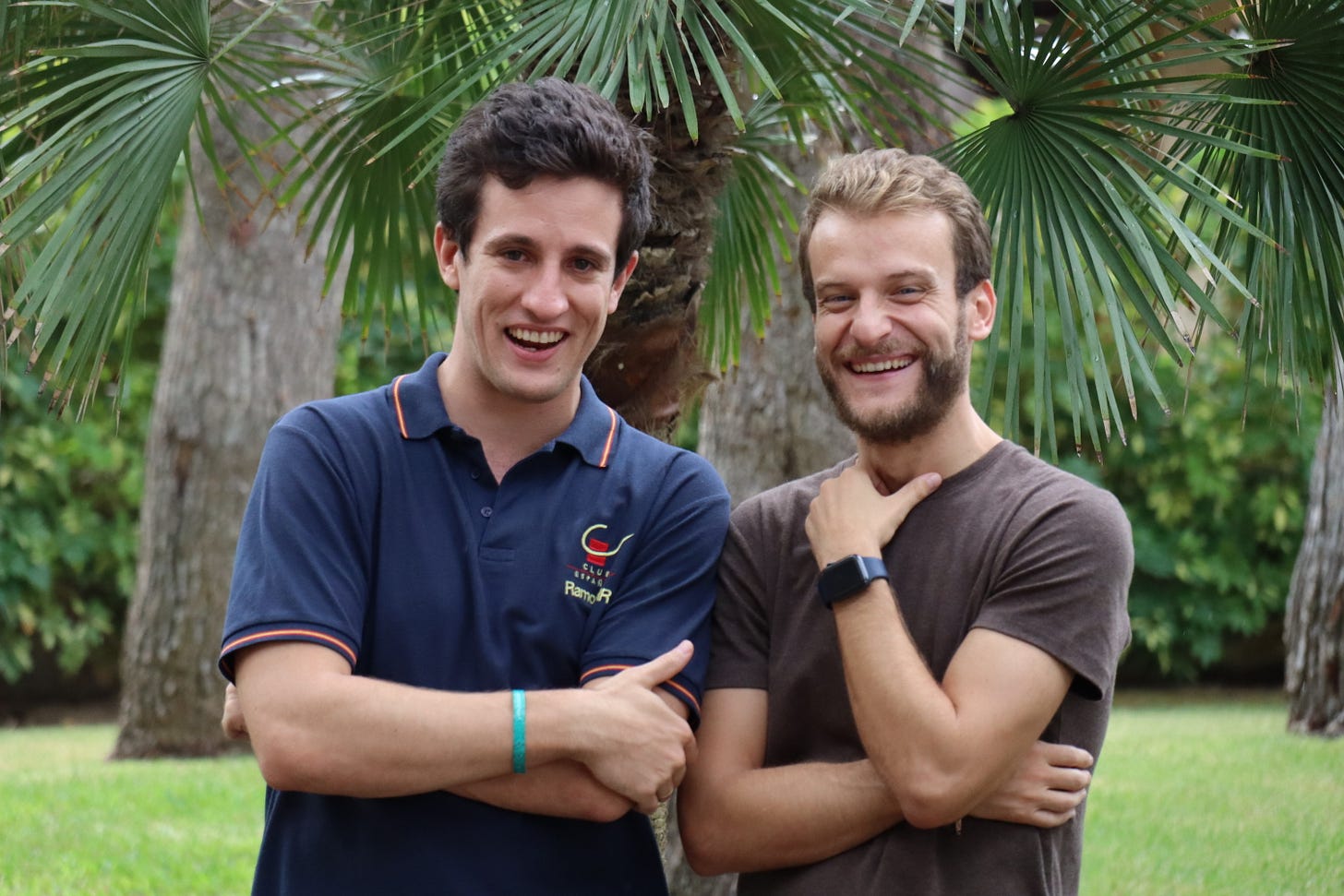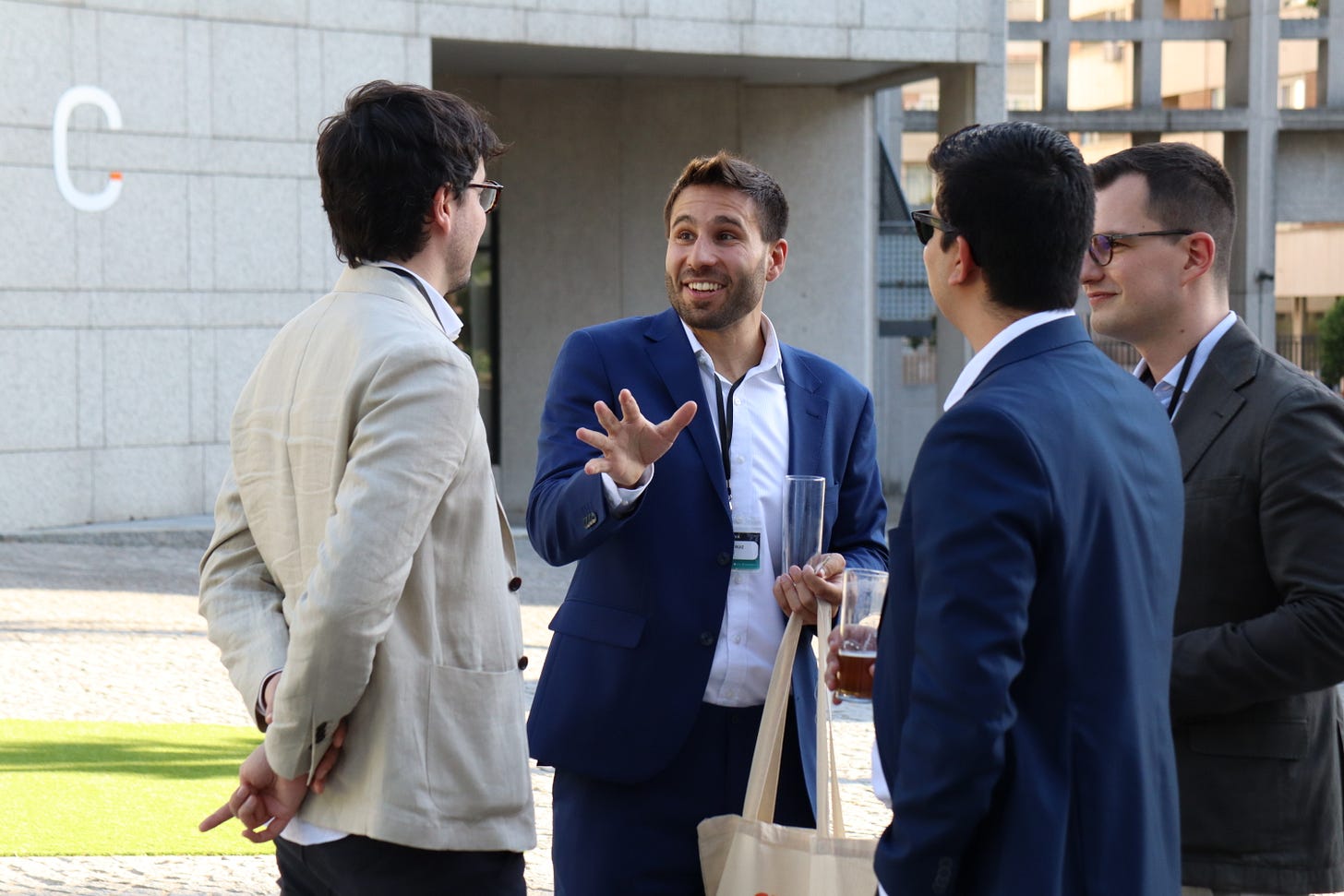From Townhall to Living Room - the evolution of social media (and the opportunity we see at Nova)
How we plan to complement LinkedIn the same way WhatsApp has complemented Facebook
Hey, we are Ramón Rodrigáñez and Andrea Marino, Co-Founders at Nova, the Global Top Talent Network.
Welcome to Talent First, our newsletter where those who believe that talent is the most important resource in the economy get together.
Every week, we cover a new topic related to attracting, hiring, developing, and retaining talent, as well as the learnings from our journey building Nova.
Summary
From townhall to living room: The internet began as a place for public discourse, but more and more of us are retreating into private spaces. We explore why.
Why the shift matters more than ever in the AI age: From privacy scandals to burnout, we trace how public pressure and algorithmic performance loops have made intimacy the new frontier.
LinkedIn: the professional townhall, for better and worse: LinkedIn helped define modern networking. But now it’s beginning to resemble a newsfeed more than a community.
Nova’s bet on the living room model: How we’re designing Nova as a private, intentional space for meaningful professional relationships without the pressure to perform to become the “living room” for top talent.
1. From townhall to living room: how Social Media has evolved in the past 15 years
In the beginning, the Internet was a loud and thrilling place: we can call it the “townhall”. There were forums, blogs, feeds. If you had something to say, you shouted it from the rooftops (or at least posted it for the world to see).
Facebook’s News Feed, Twitter’s tweetstorms, Instagram’s perfect photos were built on the same fundamental promise: be seen. Be heard. Go viral, if you can. Visibility was currency, and everyone had a shot.
But something shifted a few years ago. As users, we began to feel the cost of that exposure. The open townhall started to feel less like a space for conversation and more like a stage. We began to curate ourselves, filter our expressions, and calculate how every post might land. The same tools that were supposed to bring us together started to exhaust us. Over time, we started to move back inwards.
This is where the “living room” metaphor becomes useful. Unlike the noisy square of the townhall, the living room is quiet. You know who’s in the room with you. You trust them. You can relax. You can joke, ask, disagree. The conversation flows more easily, not because it’s less important, but because it’s more human.
That’s why apps like WhatsApp, Telegram, Discord, and Slack have grown so dramatically. Group chats, private channels, inner circles are where people increasingly go to really talk. And more recently, even creators are pulling back: Substacks, private podcasts, closed community spaces. Not shouting to the crowd. Speaking to a circle.
This is not a rejection of public platforms. It’s a correction. We still need the townhall, but only when we also have a place to go home to.
Actually, the hype around “true social” is real, already among many Venture Capitalists. Check for instance:
This article by EQT ventures
This post last week by a partner of EQT ventures
This post by Best Nights VC - and below their map of “social startups”
2. Why the living room makes more sense, especially in the age of AI
This shift isn’t just cultural: it’s a survival mechanism.
Let’s go back to 2018. Cambridge Analytica hits the headlines. Suddenly, the world is paying attention to just how much data social media platforms hold on us and what happens when that data falls into the wrong hands.
But the more insidious realization came after:
It wasn’t just about privacy. It was about control.
If your digital self can be used to influence your beliefs, your votes, and your career opportunities, then being online stops being safe. It becomes performative, defensive and highly transactional.
Fast forward to now, and the landscape has evolved again, now with AI. Every tweet, post, like, and comment can be analyzed, summarized, and ranked. You're not just sharing for humans anymore. You’re feeding the algorithm. And the algorithm is learning who you are, even the parts you never meant to reveal.
That brings us to what we’ve come to call public exposure burnout. It’s not just fear of being hacked or manipulated. It’s the sheer psychological weight of performing, day after day, on platforms that reward attention, not depth.
We've heard this over and over again from Nova members. They're exhausted from trying to "optimize their presence," even when it's just to appear active or visible on LinkedIn. They want to learn, connect, and grow, but without the constant fear of being judged, misunderstood, or simply… ignored.
In this context, private, intention-driven spaces aren’t just a preference. They're a necessity. They allow for what public platforms increasingly struggle to offer: nuance, exploration, doubt, and trust.
3. LinkedIn: the townhall of professional networking
Let’s give credit where credit is due: LinkedIn changed the game in professional networking.
It built the definitive townhall for the professional world. For the first time in history, millions of professionals could broadcast their resumes, ideas, and achievements to a global network. It made hiring more efficient, networking more scalable, and personal branding a core part of your career toolkit.
But today, LinkedIn is feeling the limits of its own design. It has become too much of a townhall—more like a news feed than a place for actual human connection.
We’re seeing this everywhere:
The rise of humblebrags and virality bait. Every day, the feed is flooded with polished posts designed for engagement, not honesty.
Decline in DMs that matter. Most messages are either cold pitches or impersonal sales sequences. Real conversations are increasingly rare.
Fear of being “off-brand.” People second-guess whether it's okay to ask for help, express doubt, or even change careers, because it might look like a "step back."
It’s not that LinkedIn is broken. It’s that it was never designed for the kind of connection we’re now craving. We use it to show who we are after we’ve figured things out. Not while we’re still learning, exploring, or changing paths.
And in a world where talent needs to adapt faster than ever, where careers zigzag, not climb in straight lines, there needs to be a place for that messiness, too.
4. How Nova can become the living room for top talent
This is exactly where Nova comes in.
Don’t get us wrong: we (Andrea and Ramón) are both power users. LinkedIn is actually one of the best sources of growth for Nova, with +140k followers already. We’re not trying to replace LinkedIn. But we simply believe the townhall cannot (by definition) be the living room.
Just like WhatsApp didn’t replace Facebook (it simply served a different need, for a different moment), we believe Nova can play a complementary role and cover a space that does what LinkedIn can’t.
4.1 Real conversations, not public performances
At the heart of Nova is conversation. But not the kind that gets 100 likes or ends up in a carousel post.
We’re building spaces (micro-communities) where members can talk honestly. Local chapters, functional groups (e.g., “Sales professionals in Madrid” or “Founders in Paris”), and circles for shared challenges or ambitions.
No public feeds. No algorithm. No likes.
Just real people helping each other solve real problems. It could be “How do I manage my first team?” or “What do you wish you’d known before switching from consulting to product?” It could even be “I just got laid off and I’m not sure what’s next.”
This isn’t about being polished. It’s about being present.
And over time, that’s how we believe trust grows: not through retweets, but through replies.
4.2 1-1 connections that are meaningful and mutual
Beyond chat spaces, we’ve been quietly designing systems that make professional networking feel like a human interaction again. In the end, even though you may be part of a “group”, “community” or “network”, human relationships are built 1-1 first. That’s why we have built:
Gravity: A feature that pairs two members for a 30-minute 1-on-1 conversation each week. You show up. You talk. You learn. It’s networking, minus the pitch.
Mentorship: Structured connections between experienced Nova members and those earlier in their careers. Mentorship shouldn’t be an abstract idea—it should be a consistent habit.
Member directory with capped reach-outs: You can reach out to five people a month. That’s it. No mass spam. No LinkedIn InMail fatigue. Just thoughtful, intentional conversations.
All of this is designed to create the kind of network effect we believe matters most: not size, but depth. Not scale, but strength. Let’s be honest: we cannot, by definition, get even close to the size of LinkedIn (our estimate is that there are roughly 12M “Novas” around the world if we stay within the 25-45 age range we target today).
But we do believe we can be super relevant and cover a space that is missing: the professional living room of top talent. A network where you don’t have to pretend, because everyone has been pre-vetted for their talent and is worth being listened to.
Join the waitlist to apply if you want to be part of it.
Thanks for reading Talent First. If you liked this issue, don't forget to hit ❤️.
We would be grateful if you could share it by email or social media with other people who might like it or might be looking to hire top talent.












